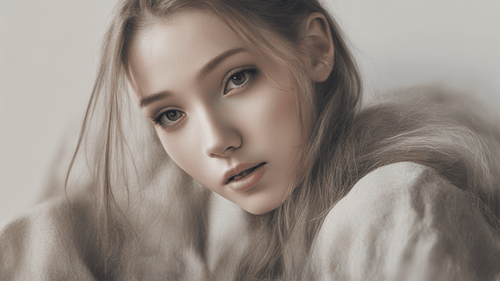
Introduction
Artificial Intelligence (AI) has transcended boundaries, permeating every facet of human life. One of its remarkable manifestations is the revolutionary "Drawing to Picture AI." This cutting-edge technology brings art and technology into an extraordinary union, redefining artistic creation and image generation. In this article, we delve deep into the world of Drawing to Picture AI, exploring its nuances, capabilities, and potential impact on the creative landscape.
Drawing to Picture AI: Unveiling the Magic
What is Drawing to Picture AI?
Drawing to Picture AI is a sophisticated AI-powered process that transforms sketches, doodles, or rough drawings into stunning, fully-realized images. Through intricate algorithms and deep learning techniques, this technology bridges the gap between imagination and realization, enabling artists and creators to visualize their ideas with unprecedented precision.
How Does Drawing to Picture AI Work?
At its core, Drawing to Picture AI utilizes neural networks and machine learning to comprehend the underlying structure of a sketch and translate it into a high-resolution image. The AI system dissects the sketch's lines, shapes, and proportions, infusing it with texture, color, and intricate details. This transformation is achieved through a multi-layered process, involving pattern recognition, style adaptation, and content generation.
The Evolution of Artistic Expression
Drawing to Picture AI represents a quantum leap in the realm of artistic expression. Artists no longer face the limitations of manual translation, as AI empowers them to focus solely on their creative vision. Whether it's a whimsical doodle or a complex architectural blueprint, AI transforms each stroke into a masterpiece, expanding the horizons of what's artistically conceivable.
The Inner Workings: Decoding Drawing to Picture AI
Neural Networks: The Creative Cortex
Central to Drawing to Picture AI are neural networks, computational systems modeled after the human brain's intricate circuitry. These networks consist of layers of interconnected nodes, each processing and transforming input data. Through a process known as "training," neural networks learn the nuances of artistic styles and structures, allowing them to generate visually coherent images from rudimentary sketches.
Training Data and Datasets
The effectiveness of Drawing to Picture AI hinges on the quality and diversity of its training data. Vast datasets comprising an array of artistic genres, styles, and eras serve as the foundation for the AI's creative prowess. By exposing the AI to an eclectic array of artworks, it hones its ability to grasp the subtleties that differentiate a minimalist sketch from a detailed masterpiece.
Style Transfer: Infusing Artistic Flair
Style transfer is a pivotal aspect of Drawing to Picture AI. By imbibing the essence of renowned artists or distinctive styles, AI imbues sketches with specific visual aesthetics. This fusion of creativity and technology produces images that seamlessly fuse the artist's intent with the nuances of iconic artistic movements.
Drawing to Picture AI Applications: Pioneering Possibilities
Artistic Ideation and Design
Drawing to Picture AI transcends conventional design processes, enabling architects, fashion designers, and creatives from diverse domains to swiftly conceptualize and iterate their ideas. What once demanded meticulous drafting and revision now unfolds effortlessly, enhancing the fluidity of the creative journey.
Educational Empowerment
In the realm of education, Drawing to Picture AI emerges as a transformative tool. Aspiring artists can harness this technology to dissect intricate artistic techniques, deconstructing renowned artworks stroke by stroke. Moreover, educators can leverage AI-generated visuals to elucidate complex artistic theories, fostering a deeper understanding among students.
Interactive Entertainment and Gaming
The integration of Drawing to Picture AI into interactive entertainment and gaming ushers in a new era of player customization. Gamers can now breathe life into their avatars with personalized sketches, fostering a deeper sense of connection and ownership within virtual realms.
FAQs: Demystifying Drawing to Picture AI
Is Drawing to Picture AI Limited to Professional Artists?
Not at all. While professional artists can leverage Drawing to Picture AI to expedite their creative process, individuals from all walks of life can engage with this technology. From casual doodlers to burgeoning enthusiasts, anyone can explore the realm of image generation through AI.
Does Drawing to Picture AI Stifle Human Creativity?
On the contrary, Drawing to Picture AI amplifies human creativity. By streamlining the translation of ideas into visual forms, it liberates artists from technical constraints, allowing them to channel their imagination more fully. This symbiotic relationship between AI and human creativity enriches the artistic landscape.
Can Drawing to Picture AI Replicate Every Artistic Style?
Drawing to Picture AI's versatility is impressive, yet it may not perfectly replicate every artistic style. While it excels in capturing a wide array of genres, from impressionism to cubism, certain avant-garde or deeply personal styles may remain challenging to emulate.
Is AI-Generated Art Comparable to Human-Created Art?
AI-generated art possesses its own distinct allure and value. While it may not replace human-created art, it forges a new frontier of artistic exploration. The fusion of human ingenuity and AI-driven precision results in an exquisite tapestry of creativity.
What is the Future Scope of Drawing to Picture AI?
The future of Drawing to Picture AI brims with potential. As AI algorithms become more sophisticated and datasets expand, we can anticipate even more seamless and nuanced transformations. This technology's integration into augmented reality and virtual reality realms promises to reshape how we perceive and interact with the visual world.
How Does Drawing to Picture AI Impact Copyright and Attribution?
The intersection of AI-generated art and copyright is an evolving landscape. While AI assists in the creative process, legal and ethical questions arise regarding ownership and attribution. Striking a balance between technological innovation and artistic integrity remains a crucial consideration.
Conclusion
Drawing to Picture AI stands as a testament to the boundless capabilities of artificial intelligence. Its ability to metamorphose rough sketches into breathtaking visuals exemplifies the harmony between human ingenuity and technological advancement. As Drawing to Picture AI continues to evolve, it will usher in a new era of creative exploration, expanding the horizons of artistic expression and catalyzing a renaissance in the world of visual aesthetics.